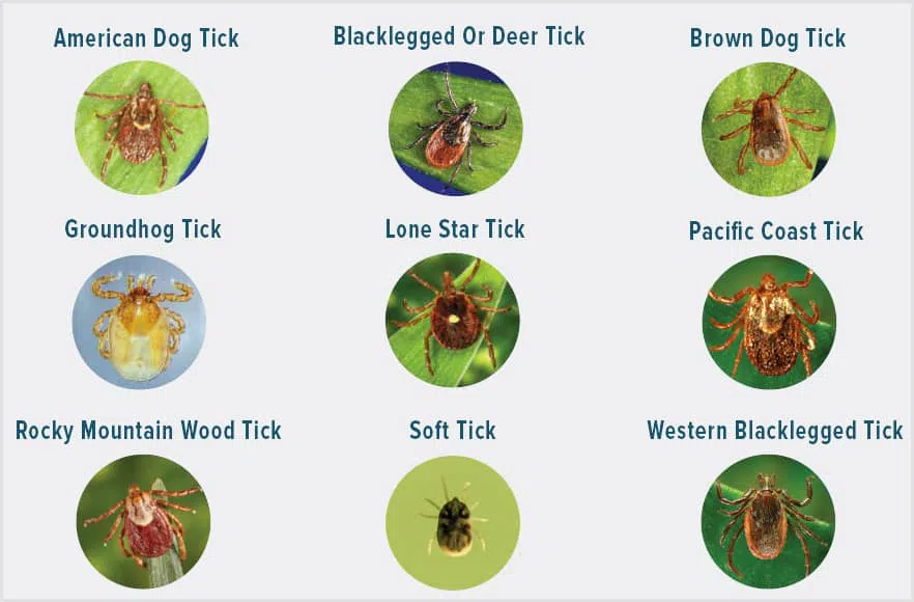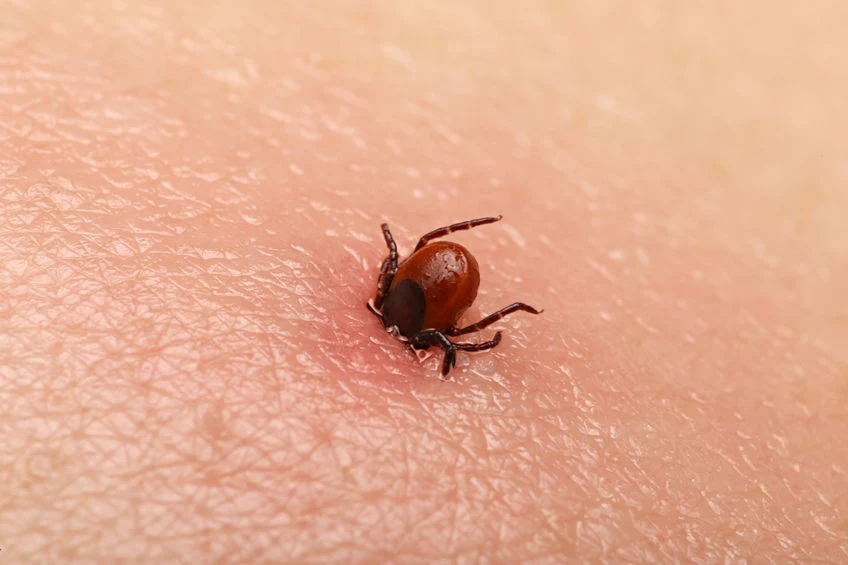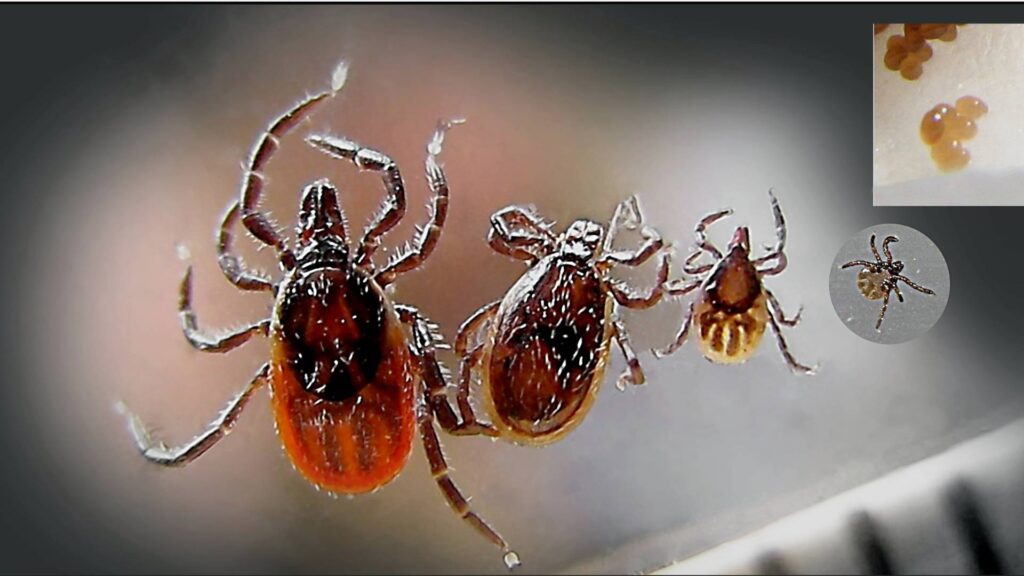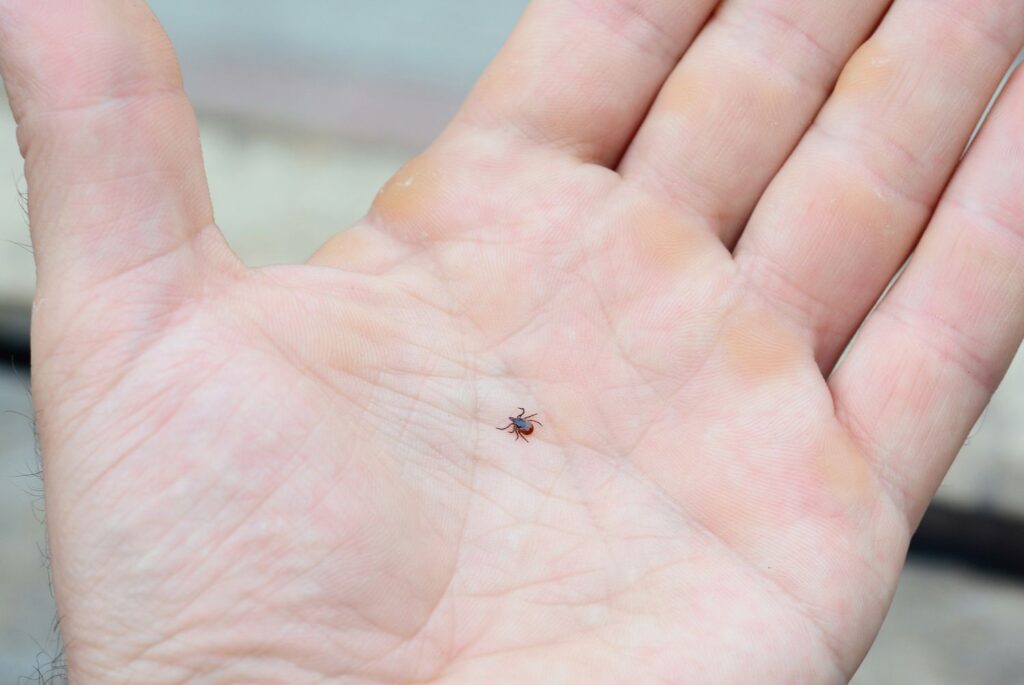Tick Removal Services by Pest Control Xperts in San Luis Obispo
Serving homes, apartments, dormitories, hotels, and healthcare offices throughout San Luis Obispo, Morro Bay, Cayucos, Avila Beach, Los Osos, Pismo Beach, Grover Beach, Oceano, Arroyo Grande, Guadalupe, Nipomo, California, and Surrounding Areas
Professional Ticks Control for San Luis Obispo, Atascadero & Paso Robles: Eliminating the Disease Risk at its Source
You return from a hike near **Poly Canyon** or let your pet play in the yard, only to find a tiny, blood-engorged tick attached to skin. The immediate fear of disease, particularly **Lyme disease**is overwhelming. You remove the visible pest, but what about the invisible population hiding in your yard’s tall grass and leaf litter? Your attempts at yard spray provide a temporary **illusion of control undone by the hidden life cycle** of ticks and the constant presence of wildlife hosts. For property owners in **San Luis Obispo, California**, and nearby towns like **Atascadero**, **Paso Robles**, **Arroyo Grande**, and **Los Osos**, aggressive, targeted **Ticks control** is a mandatory part of protecting health. At **San Luis Obispo Pest Control Xperts**, we bring the **expertise** to eliminate ticks from your environment, securing your property against these dangerous external parasites.
Why Ticks Appear in San Luis Obispo and Surrounding Communities
**Ticks infestation** is primarily driven by the Central Coast’s unique blend of lush vegetation, moisture, and abundant wildlife movement. Unlike insects, ticks wait for a host, making habitat reduction the core of effective **pest control for Ticks**.
Local Climate and Geographical Triggers
- The Western Blacklegged Tick Risk: The most critical tick in our region is the **Western Blacklegged Tick** (*Ixodes pacificus*), the primary vector for **Lyme disease** in California. This species is abundant in our coastal and foothill ranges, thriving in the dense oak woodlands and chaparral areas surrounding **San Luis Obispo** and **Atascadero**.
- Seasonal Nymphal Threat: Tick activity is year-round, but the period of highest risk to humans is **spring and early summer (March to August)** when the nymph stage is active. Nymphs are tiny, often described as the size of a **poppy seed**, making them extremely hard to spot and increasing their disease transmission risk.
- Moisture and Habitat: Ticks require moisture to prevent desiccation. They are most common in **grassy, wooded, or brushy areas** with leaf litter, logs, and tall grass, especially near **riverbeds** and hiking **trails**. The wetter seasons in **Arroyo Grande** and **Los Osos** create ideal conditions for tick survival and development.
Architecture and Infestation Vulnerabilities
- The Urban-Wildland Interface: Homes in new suburban developments and established neighborhoods like **Paso Robles** that back up to canyons, open space, or dense vegetation (including local oak and fir woodlands) are at the highest risk. Wildlife hosts (deer, **rodents**) introduce ticks directly into the yard perimeter.
- Landscape Harborages: Decorative landscaping, dense shrubs, unmaintained ground cover, and **woodpiles** near the house provide sheltered, moist habitats where ticks “quest” (wait for a host). Ticks rarely travel far; they are waiting for *you* or your pet to come to *them*.
- Indoor Introduction: While ticks do not form **colonies** indoors, they can survive in cracks, baseboards, and upholstery if introduced by a pet. The **Brown Dog Tick** (*Rhipicephalus sanguineus*) is a species that can survive and breed entirely indoors, although it is less common in our area.
Identifying the Tick Threat in the Central Coast Region
There are no known species such as “carpenter ticks” or “pharaoh ticks.” The Central Coast’s primary concern is managing the **Western Blacklegged Tick** and the various disease threats they carry.
Western Blacklegged Tick (*Ixodes pacificus*)
- Identification: Nymphs are tiny (poppy seed size), light-colored, and hard to see. Adults are larger, with a distinctive dark “scutum” (shield) and reddish body. They are often active from **October to June** (adults) and **March to August** (nymphs).
- **Risk:** The primary vector for **Lyme disease** and **Anaplasmosis** in California. **Ticks control** must focus on eliminating the nymph stage due to its size and peak summer activity.
Other Common Species in San Luis Obispo County
- **Pacific Coast Tick (*Dermacentor occidentalis*)**: Found in grasslands and brush. A vector for **Rocky Mountain Spotted Fever** and **Tularemia**.
- **American Dog Tick (*Dermacentor variabilis*)**: Also found in brushy areas. A vector for **Rocky Mountain Spotted Fever** and **Tularemia**.
Problems Ticks Create for Homes and Businesses
An established tick population in your yard is a direct health liability that demands immediate **Ticks exterminator** action.
- **Lyme Disease Risk:** The most serious threat posed by **Western Blacklegged Ticks** is the transmission of **Lyme disease** (*Borrelia burgdorferi*). Ticks often need to be attached for at least 24 hours to transmit the bacteria, but early detection is vital.
- **Other Tick-Borne Diseases:** Ticks are vectors for several other diseases, including **Anaplasmosis**, **Tularemia**, and **Rocky Mountain Spotted Fever**, all of which require prompt medical attention.
- **Pet Illness:** Ticks cause severe discomfort, skin irritation, and can transmit diseases to pets, necessitating continuous veterinary-recommended preventative products.
- **Loss of Outdoor Enjoyment:** A **Ticks infestation** on your property forces a reduction in outdoor activities, especially for children and pets, greatly diminishing the enjoyment of your **San Luis Obispo** home.
Signs of an Escalating Ticks Infestation
**What are the signs of a major Ticks infestation?** Because ticks do not leave easily visible trails or **droppings** like insects, the signs of a yard or home problem are related to host contact and observation.
- **Finding Attached Ticks:** Finding multiple ticks attached to humans or pets after spending time in your yard or on your adjacent property is the clearest indicator of a population problem. Nymphs are tiny, often missed, and highly dangerous.
- **Increased Wildlife Activity:** An increase in deer, **rodents**, or stray animals on your property suggests an increased transfer of ticks into your landscape.
- **Tick Dragging Test:** Walking through suspected areas of tall grass or dense brush in your yard with a white cloth or white socks. Ticks will quest on the fabric, providing visual confirmation of a severe **Ticks infestation**.
- **Unexplained Bites:** Repeated, unexplained bites on ankles and lower legs may signal an emerging population in your home or yard, requiring professional **Ticks inspection**.
Why Professional Extermination is Essential for Ticks Removal
The flea life cycle is complex, but the tick life cycle is defined by movement and resilience in the environment. Your attempts at yard **spraying** are a temporary **illusion of control undone by the hidden pupal stage and the surrounding habitat**.
The Fatal Flaw of DIY Ticks Control
- **Not Eliminating Habitat:** Ticks thrive in the **transition zone** between your lawn and the wooded areas. Homeowners often treat the open lawn, neglecting the critical periphery of dense brush, leaf litter, and perimeter barriers where 90% of ticks are found.
- **Missing the Life Stages:** DIY products often lack the long-lasting residual action necessary to kill all three life stages (larva, nymph, and adult) and the long incubation period of the tick life cycle. Killing the adults does nothing to stop the hidden nymphs that hatch months later.
- **Constant Reintroduction:** Ticks are not endemic to your lawn; they are constantly reintroduced by wildlife hosts. Without a comprehensive perimeter barrier and management of wildlife attractants, your yard becomes re-infested immediately after your spray wears off.
The Professional IGR and Habitat Reduction Solution
**San Luis Obispo Pest Control Xperts** utilizes a systematic, **Integrated Pest Management (IPM)** approach that focuses on reducing tick habitat and applying targeted, barrier treatments for long-term **Ticks removal**.
- **Targeted Perimeter Treatment:** We apply long-lasting residual products to the critical areas where ticks live: the three-foot band of leaf litter, woodpiles, perimeter fencing, and dense shrubbery, not just the open lawn. This eliminates the established tick population.
- **Habitat Modification:** Our **expertise** includes providing crucial advice on **exclusion techniques** through landscaping: clearing leaf litter, trimming low-hanging branches, and creating **gravel or wood chip barriers** between the lawn and wooded areas. This physically reduces the suitable tick habitat.
- **Focus on Nymphs:** We tailor our **professional Ticks treatment** schedule to target the active nymph stage (spring/early summer) to eliminate the life stage most likely to transmit **Lyme disease**.
Our Ticks Removal Method: A Strategic, Safe Process
Our method for **Ticks control** is systemic and built on local **experience** to ensure a definitive, **environmentally friendly pest control** solution for your yard and home.
Step 1: Ticks Inspection and Risk Area Assessment
Our service begins with a detailed **Ticks inspection** of your outdoor environment in **San Luis Obispo** or **Paso Robles**. We identify all high-risk zones: dense vegetation, stone walls, **woodpiles**, ornamental plantings, and areas of high **rodent** activity, which are major carriers of **Western Blacklegged Ticks**.
Step 2: Habitat Modification and Exclusion Techniques
We work with you to implement **exclusion techniques** and habitat modifications. This involves clearing **leaf litter**, removing tall grasses, and creating a clear, dry barrier between your managed lawn and the wildland interface to reduce suitable tick harborage.
Step 3: Targeted Barrier Treatment and Life Cycle Elimination
We apply targeted **professional Ticks treatment** to the high-risk perimeter, focusing on the interface where **rodents** and other hosts enter the yard. This application targets all active life stages and provides a persistent barrier against newly introduced ticks.
Step 4: Monitoring and Seasonal Pest Prevention
We establish a monitoring schedule, particularly during the peak nymph season, to verify the success of the treatment and ensure **Ticks prevention** remains effective. We provide continuous guidance on personal protection and concurrent pet treatment.
Why San Luis Obispo Relies on Pest Control Xperts
We are the Central Coast’s premier authority for **Ticks control**. Our **expertise** is rooted in understanding the regional threat of the **Western Blacklegged Tick** and the habitat pressures of our urban-wildland environment. We provide **trustworthiness** by focusing on habitat reduction and targeted treatment, ensuring a safer yard for your family and pets. Our systematic approach provides a definitive solution to your **Ticks infestation**.
Do not risk the severe health threats of **Lyme disease** or other tick-borne illnesses. That stray tick you found is a warning that your property is a host-seeking environment. Your past efforts at **Ticks removal** have been an **illusion of control undone by the hidden population** in the surrounding brush and leaf litter. **San Luis Obispo Pest Control Xperts** is ready to apply the specialized **expertise** and the definitive **professional Ticks treatment** required to **get rid of Ticks** and secure your outdoor life. Call us today.
Service Area Reminder: We proudly serve **Ticks control** clients throughout **San Luis Obispo**, **Atascadero**, **Paso Robles**, **Arroyo Grande**, and **Los Osos**. The relevant zip codes include 93401, 93405, 93422, 93446, 93420, and 93412.
Related Topics in Ticks Control
Ticks Control for Pets: The Essential Need for Veterinary Partnership
**Ticks control** in the home and yard is only half the battle. Adult ticks and nymphs primarily feed on hosts, meaning your pets are constantly bringing them onto your property. We emphasize that successful **Ticks removal** requires concurrent, veterinarian-recommended oral or topical products for your pets to kill ticks before they can drop off and establish an **infestation** in the yard, ensuring a complete solution.
The Unseen Danger: Lyme Disease and Western Blacklegged Tick Nymphs
The most significant threat to humans is the **nymph stage** of the **Western Blacklegged Tick**, which is active in spring and summer. Nymphs are tiny, often missed, and statistically the most likely stage to transmit **Lyme disease**. Our **professional Ticks treatment** is timed specifically to target this critical nymphal period, maximizing the effectiveness of **Ticks exterminator** services in high-risk wooded areas.
Habitat Modification: The Ultimate Exclusion Techniques for Ticks
Ticks are low-mobility pests that wait for a host. The most permanent **Ticks prevention** involves structural landscaping changes. This includes creating **gravel or wood chip barriers** between wooded areas and manicured lawns, removing **leaf litter**, and keeping **woodpiles** elevated and away from the house. These **exclusion techniques** dry out the ticks’ preferred moist environment, making the habitat unsuitable for a **Ticks infestation**.
San Luis Obispo’s High-Risk Zones: Trails, Woodpiles, and Leaf Litter
Due to the numerous oak woodlands and hiking trails around **San Luis Obispo** and **Atascadero**, ticks are common on logs, rocks, and **leaf litter** along pathways. Our **Ticks inspection** targets these areas, as well as the transition zones in your yard. We recommend immediately showering and drying clothes on high heat after spending time in these high-risk areas, a simple but essential personal **Ticks prevention** measure.
Ticks Inspection: Using the White Cloth Dragging Method
Unlike insects, ticks are not attracted to bait. Our **Ticks exterminator** **expertise** utilizes techniques like the white cloth or “dragging” method during **Ticks inspection** to physically survey high-risk areas of the yard. This involves dragging a white fabric square over dense brush and leaf litter to confirm the presence of **Ticks infestation** before applying **professional Ticks treatment**, ensuring treatments are targeted precisely where the pest population is established.
Pest Control for Ticks: Why Residual Treatments are Necessary
Because the tick life cycle can take months or years to complete, **pest control for Ticks** requires a long-lasting residual **professional Ticks treatment**. Our materials are formulated to persist in the environment, eliminating ticks that hatch or are newly introduced by **rodents** or other wildlife hosts weeks after the initial application, providing the necessary **trustworthiness** for long-term **Ticks control**.





